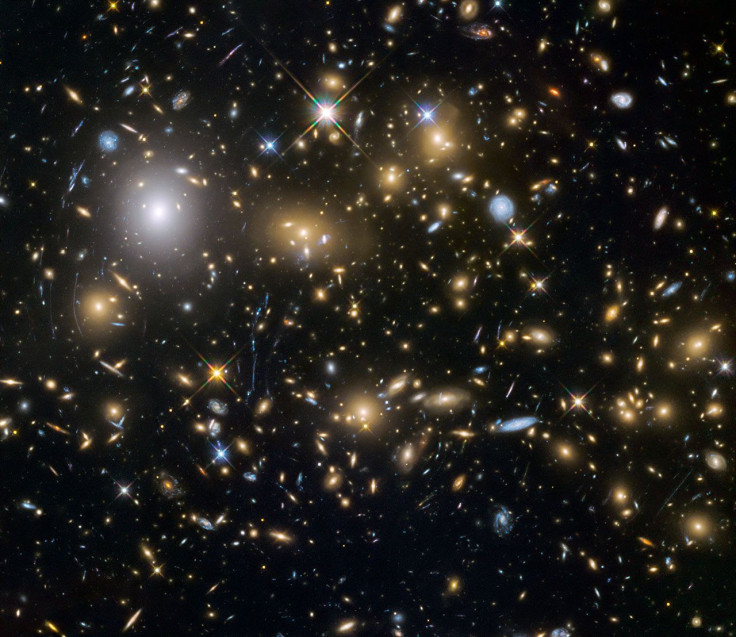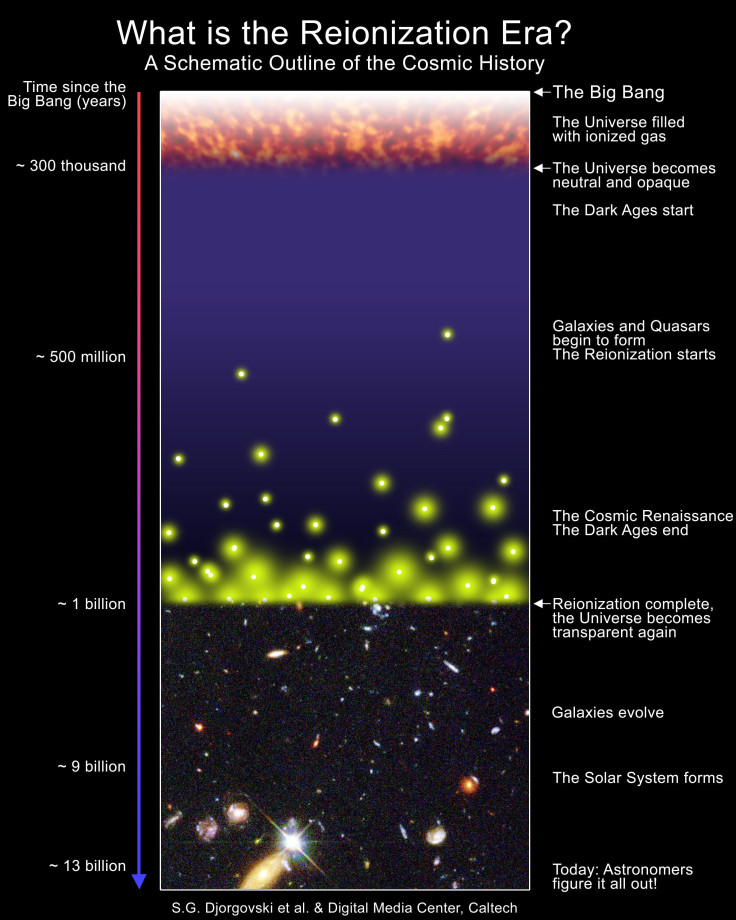Hubble Observes Earliest Known Galaxies At The Frontier Of The Universe

The oldest galaxies at the end of the universe were formed 600 million years after the Big Bang. Now, for the first time, you can see them: the Hubble Space Telescope was able to capture these images, released new images Thursday as part of its Frontier Fields program, with an assist from a phenomenon known as gravitational lensing.
The Hubble Frontier Fields program uses galaxy clusters to observe the early universe. At this distance, the light from the distant galaxies have traveled up to 13 billion years to reach the space telescope. The galaxies in this region are among the oldest ever discovered, having formed only a few hundred million years after the Big Bang. These galaxies were pivotal to the development of the universe.
In the latest Frontier Fields release, Hubble observed some very faint galaxies with the help of gravitational lensing. As with many things, Albert Einstein's theory of general relativity was the basis for understanding this phenomenon. The mass of an object warps the surrounding space and this property also affects light. The phenomenon was first observed by Arthur Eddington and Frank Watson Dyson in 1919 when they observed a few incorrectly positioned stars around, according to Universe Today.
Understanding how a massive object could bend light meant astronomers could explore further using a relatively close object. A galaxy could be used as magnifying glass as light from a distant galaxy is warped around the closer object.
Hubble's latest discovery of 250 faint galaxies -- formed 600 million to 900 million years after the Big Bang -- in the early universe using three galaxy clusters to magnify the light given off by these distant objects. The galaxies are the faintest ever observed by Hubble. Despite their tiny stature, these galaxies were vital in making the universe visible.

"If we took into account only the contributions from bright and massive galaxies, we found that these were insufficient to reionize the universe. We also needed to add in the contribution of a more abundant population of faint dwarf galaxies," lead author Hakim Atek , from the Ecole Polytechnique Fédérale de Lausanne, said in a statement. The early universe was shrouded by hydrogen gas that blocked ultraviolet light. Galaxies, stars and other objects heated up hydrogen to cause the ionization of the gas. The ionized gas made the universe transparent again, according to MIT's Haystack Observatory.
The observations peg the end of the epoch of reionization around 700 million years after the Big Bang, notes NASA. Hubble's Frontier Fields will continue to use galaxy clusters to observe even earlier galaxies. The research was published in the Astrophysical Journal.
© Copyright IBTimes 2024. All rights reserved.






















